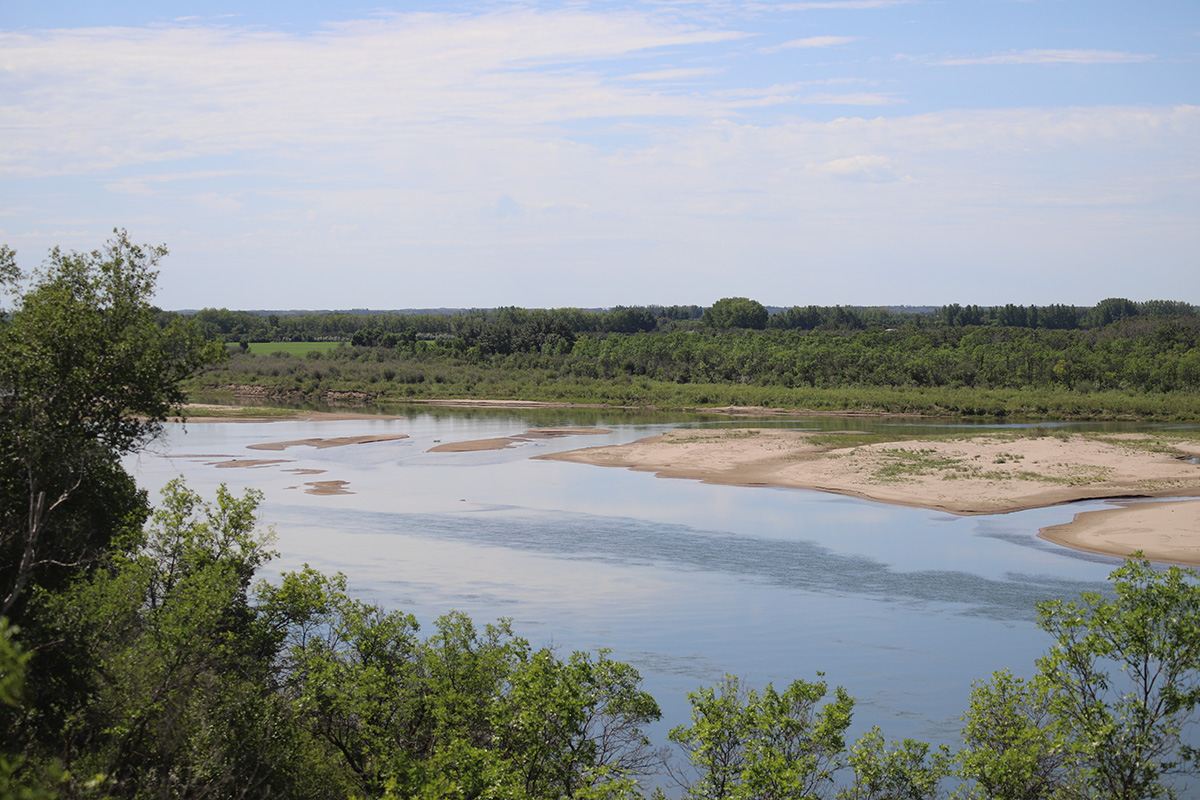
Even in a Dry Year, Saskatoon's Drinking Water Is Reliable
Saskatoon's water remains safe and reliable, even with low river levels, thanks to careful planning and ongoing monitoring.
Low flows in the South Saskatchewan River are no surprise after nearly four years of drought-like conditions, yet residents of Saskatoon can rest assured: the city's drinking water is not at risk.
"Our treatment plant and water intake systems are operating well, and we've planned for situations like this," says Russ Munro, Director of Saskatoon Water with the City of Saskatoon. "The water remains safe and reliable."
The South Saskatchewan River is Saskatoon's sole source of drinking water, and this summer's flows are lower than normal due to reduced winter precipitation in the Rocky Mountains, which supply approximately 80% of the river's flow to Lake Diefenbaker. Still, the City of Saskatoon has infrastructure in place to ensure residents continue to receive high-quality water every day, even in dry years.
"With longer dry periods becoming more common, building resilient water systems is essential, which means ensuring supply as well as thinking about how much water we use," says Dr. Corinne Schuster-Wallace, Executive Director of the Global Institute for Water Security. "The City of Saskatoon has shown strong leadership in preparing for these challenges, and the strong connection between our organizations helps ensure science supports smart decisions to protect our water."
Although the current situation poses no risk to water availability, residents are encouraged to use water wisely. Small actions like watering lawns during cooler times of day, using mulch, and fixing leaks in your sprinkler hose can help preserve this valuable resource. Visit saskatoon.ca/BeWaterWise for ways to save water inside and outside, any time of year.
To learn more, we asked Russ Munro five questions about how the City of Saskatoon navigates low flow conditions in the South Saskatchewan River.

1. How do low river levels impact Saskatoon's water supply operations, if at all?
The City of Saskatoon raw water intake was commissioned in 2014. This new intake was designed to operate in the minimum flow conditions of the South Saskatchewan River. There are interprovincial agreements that require certain flow to be released by the Gardiner Dam and the Water Security Agency carefully monitors and manages the levels and Diefenbaker Lake to ensure that these minimum flows can be met. The design of the intake is intended to self-clean and remove sand. This means that with diligent management from the Water Security Agency, the raw water intake will continue to function even in minimum flows. The City of Saskatoon also has its backup intake located at the water treatment plant should there be mechanical or other problems with the new raw water intake.
2. How does sediment accumulation and movement in the South Saskatchewan River affect Saskatoon's water intake and treatment operations?
During periods of low flow, Saskatoon Water has never had an issue bringing in enough raw water to meet the potable water demands of the city and region. During high flow events, the rapid movement of sediment can create challenges for the City's intake. During the high flow events in 2011, while two cofferdams were in place for the new intake construction and for the circle drive south construction, extremely high flow rates brought sediment into the City's old intake which made it very difficult to treat water to potable standards and resulted in a period of water restrictions for over a week. Sudden high flows in December of 2020 had a short-term impact on the City's new raw water intake, however, it returned to normal operations within approximately 12 hours, as was anticipated with its design, though this situation led to short term water restrictions.
In partnership with the City's sustainability department, we have set a target of reducing potable water use for outdoor applications and are working on several initiatives to help reduce water use in civic operations, like our spray pad improvement project where we are upgrading nozzles and adding remote controls to use water more efficiently.
3. What systems or contingency plans does the City have in place for drought or low-flow years like this one?
The Water Security Agency is responsible for maintaining flows in the South Saskatchewan River and is also the regulator for water and wastewater in the province resulting in a tight-knit relationship between our two organizations. While the City does not directly manage the Diefenbaker Lake reservoir, our provincial partners ensure we have a supply of water through their management of the reservoir. The City takes drought conditions into account primarily because they often lead to increased water usage for irrigation, spray pads and other outdoor activities. Potable water reservoirs managed by the City ensure there is sufficient capacity to meet peak demands. In the event of an emergency, the City has a process for escalating restrictions starting with internal restrictions (such as reducing parks watering), then moving to voluntary and finally required mandatory restrictions. Fortunately, only once in 17 years has the City had to use mandatory restrictions.
4. Looking ahead, how is the City planning for water security in the face of changing climate and weather patterns?
While the raw water supply for Saskatoon is protected by the Water Security Agency, the City continues to take action to address the impacts of climate change. One of the most exciting new initiatives is exploring opportunities to use non potable water, specifically the treated water coming from the wastewater treatment plant. This treated effluent water, often referred to in industry as ‘purple water’, can be used for irrigation and industrial applications that do not require potable water. Purple water provides a source that is cleaner than raw water and has a lower carbon intensity than potable water. By using purple water, we reserve existing capacity in the potable water system for where it's really needed. The City is implementing a pilot for irrigation of certain park assets with purple water. The wastewater treatment plant has successfully used purple water to irrigate its property for many years.
5. How has your perception of the river changed as Saskatoon experiences low flows that affect its use recreationally and the communities relationship with the river?
Working for Saskatoon Water has the benefit of often being beside the river. I am always pleased to see the amount of recreation that goes on with the river. There are frequently kayakers, canoers, and even people out in small inflatable craft utilizing the river even in years like this with low flow. Working in the water industry I know how critical that resource is for our health and safety as a society and for our economic development, however, as I learn more about reconciliation I am filled with respect for the indigenous way of knowing the importance of water not just from a health standpoint but a whole quality of life standpoint that includes health and well-being, social connection, and spirituality. The river is life. We need the river to provide potable water but as Saskatoon Water we see ourselves as the stewards of the South Saskatchewan River by ensuring the highest possible quality of treated wastewater is returned to the river.
